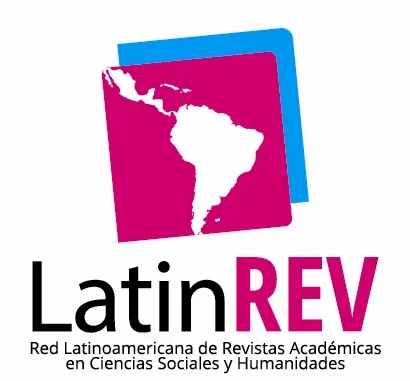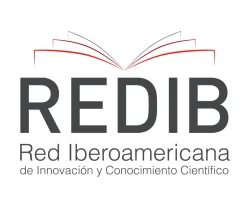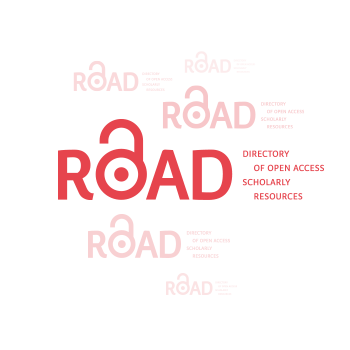Prevalencia de Anticuerpos Irregulares contra eritrocitos en donantes de sangre completa, del centro zonal de fraccionamiento de la provincia de El Oro, entre el periodo 2018-2023
Resumen
Introducción: La aloinmunización de eritrocitos ó Glóbulos Rojos (GR), ocurre cuando una persona genera anticuerpos (Ac) contra antígenos eritrocitarios externos. La destrucción de los GR es causada por los Ac clínicamente significativos. Es decir, producen reacciones transfusionales hemolíticas y anemia. Objetivo: Establecer la prevalencia de Ac anti eritrocitarios por medio del rastreo de anticuerpos irregulares (RAI), en los donantes de sangre completa, del centro zonal de fraccionamiento de la provincia de El Oro, periodo 2018-2023. Materiales y métodos: Se ejecutó un estudio retrospectivo de corte transversal de los donantes voluntarios integrados entre enero del 2018 hasta diciembre del 2023 (66.449 donantes). Se analizaron sus características demográficas y se realizaron pruebas de rastreo e identificación de Ac específicos. Resultados: El 0,24% de los donantes (160 donantes) fueron positivos para anticuerpos irregulares (AI). El grupo etario con mayor prevalencia fue el de 31 a 40 años, predominando el grupo sanguíneo O Rh positivo. Los Ac más comunes fueron del sistema Rh (anti-E, anti-D y anti-K) con mayor importancia clínica los mismo que ocasionan reacciones transfusionales hemolíticas (RTH) en adultos y recién nacidos. En cuanto al sistema Lewis (anti-Lea) fue el Ac con mayor frecuencia identificado entre los donantes. El sexo masculino fue el de mayor prevalencia conjuntamente con las donaciones por primera vez. Conclusión: El rastreo de Ac irregulares es importante para prevenir aloinmunización y reacciones hemolíticas. El Ac más prevalente perteneció al sistema Rh, siendo de gran importancia clínica, debido a que reducen las reacciones post transfusiones.
Descargas
Citas
https://www.researchgate.net/publication/342427257_Main_erythrocyte_antigens_involved_in_the_alloimmunization_process.
Angarita Merchan, M., Ximena Urbano Cáceres, E., & Leidy Cantor-Becerra, M. (2021). Anticuerpos irregulares en donantes de sangre. Revista Cubana de Hematología, Inmunología y Hemoterapia, 37(4). https://orcid.org/0000-0001-7218-7300.
Boligan, K. F., Sandhu, G., & Branch, D. R. (2022). Methods to Evaluate the Potential Clinical Significance of Antibodies to Red Blood Cells. Current Protocols, 2(8). https://doi.org/10.1002/CPZ1.504.
Delk, A. A., Gammon, R. R., Alvarez, H., Benitez, N., & Bright, F. (2021). A Hemolytic Transfusion Reaction Caused by an Unexpected Le b Antibody Patient History. Laboratory Medicine, 52, 303–306. https://doi.org/10.1093/labmed/lmaa070
Dochez, V., Chabernaud, C., Schirr-Bonnans, S., Riche, V. P., Thubert, T., Winer, N., & Vigoureux, S. (2024). Prevention of Rhesus-D Alloimmunization in the First Trimester of Pregnancy: Economic Analysis of Three Management Strategies. Transfusion Medicine Reviews, 38(1), 150778. https://doi.org/10.1016/J.TMRV.2023.150778
Flórez-Duque, J., Gómez-Álvarez, A., Patiño Carreño, J., & Cardona-Arias, J. A. (2019). Prevalencia de anticuerpos irregulares en donantes en un banco de sangre de Antioquia, 2016-2018. Ces Medicina, 33(1), 3–12. https://doi.org/10.21615/cesmedicina.33.1.1
Fonseca Joya, M. D. M.-A. Á. C. P.-R. Y. P. C.-R. S. & A. M. Nuri. (2019). Frecuencia y procedencia del antígeno Kell en mujeres donantes de sangre durante los años 2016-2017. Revista Médica de Risaralda., 25(1), 30–32. https://doi.org/10.1038/jp.2010.161
Hauser, R. G., Esserman, D., Karafin, M. S., Tan, S., Balbuena-Merle, R., Spencer, B. R., Roubinian, N. H., Wu, Y., Triulzi, D. J., Kleinman, S., Gottschall, J. L., Hendrickson, J. E., & Tormey, C. A. (2020). The evanescence and persistence of RBC alloantibodies in blood donors. Transfusion, 60(4), 831–839. https://doi.org/10.1111/TRF.15718
Hendrickson, J. E. (2018). Red blood cell alloimmunisation: induction of immunity and potential mitigation strategies. ISBT Science Series, 13(1), 105–111. https://doi.org/10.1111/VOXS.12360
Luhar, R., Shah, R., & Harimoorthy, V. (2022). Antibody screening and identification in voluntary blood donors – Need of the hour. Global Journal of Transfusion Medicine, 7(1), 47. https://doi.org/10.4103/gjtm.gjtm_1_22
Mahmoud, N., Ali, A., & Mohamed, A. A. (2022). Frequency and specificity of red blood cells alloantibodies among Sudanese multiparous women. Journal of Bioscience and Applied Research, 8(2), 2356–9182. https://doi.org/10.21608/jbaar.2022.229094
Mancilla CR, S. SJ. (2019). Estudio retrospectivo para el rastreo de anticuerpos irregulares a donadoras en Banco Central de Sangre del Centro Médico Nacional «La Raza». Revista Mexicana de Medicina Transfusional, 12(1), 6–11. https://www.medigraphic.com/cgi-bin/new/resumen.cgi?IDARTICULO=88532
Maruta, M. B., Tesfaye, K., Birhanu, E., Yigazu, N., Yuya, M., Debella, A., & Mussa, I. (2023). Prevalence and determinants of RH alloimmunization in Rh-negative women in teaching hospitals of Addis Ababa, Ethiopia: a hospital-based cross-sectional study. Frontiers in Global Women’s Health, 4. https://doi.org/10.3389/fgwh.2023.1167736
Mazurkievz de Freitas E, T. P. R. F. R. A. M. P. KS. (2024). Sociodemographic Profile of Blood Donations and Ways to Encourage Them. Cureus, 16(5). https://doi.org/10.7759/cureus.60688
Ministerio de Sanidad y Bienestar Social. (2017). Informe de Hemovigilancia. Área de Hemoterapia. https://www.sanidad.gob.es/profesionales/saludPublica/medicinaTransfusional/hemovigilancia/docs/Informe2017.pdf
Moinuddin, I., Fletcher, C., & Millward, P. (2019). Prevalence and specificity of clinically significant red cell alloantibodies in pregnant women-a study from a tertiary care hospital in Southeast Michigan. https://doi.org/10.2147/JBM.S214118
Nahendran, P., Budin, S. B., Saat, N. Z. M., Yusop, M. F., Yazid, T. N. T., & Anuar, N. N. M. (2023). Haemolytic of newborn disease-related red blood cell alloantibodies. Jurnal Teknologi, 85(1), 1–9. https://doi.org/10.11113/jurnalteknologi.v85.18550
Ni, H., Sun, X., & Cong, H. (2023). Analysis of Specificity and Distribution Characteristics of Red Blood Cell Irregular Antibodies. Laboratory Medicine, 54(5), 507–511. https://doi.org/10.1093/labmed/lmac160
Obeagu, E. I., Obiezu, J., Ezeonwumelu, C., Ogunnaya, F., & Health, B. (2023). Immunomodulatory Effects of Transfusions on Maternal Immunity in Pregnancy. NEWPORT INTERNATIONAL JOURNAL OF BIOLOGICAL AND APPLIED SCIENCES, 3(3). https://doi.org/10.59298/NIJBAS/2023/1.1.11000
Pinheiro, C. J. T., Pinheiro, C. J. T., Almeida, A. F. de, Souza, M. O. F. de, Dantas, D. de S., & Gomes, M. R. F. (2021). A frequência e a importância da identificação de anticorpos sanguíneos em doadores de sangue com pesquisa de anticorpos irregulares positiva no estado do Amapá. Vigilância Sanitária Em Debate , 9(3), 77–83. https://doi.org/10.22239/2317-269X.01424
Pitt Benedetti, V., Andrade Hellmann, M., Cristina De Cesaro, M., Frida Duarte, A., Cauz, M., & Gabriela Moresco, R. (2020). FREQUÊNCIA DE ANTICORPOS IRREGULARES IDENTIFICADOS EM PACIENTES ATENDIDOS EM UM HEMONÚCLEO NO SUDOESTE DO PARANÁ NO ANO DE 2017. Ciencias de La Salud / MEDICINA / Investigación Biomédica, 24(3), 133–138. https://doi.org/10.25110/arqsaude.v24i3.2020.7542
Reglamento de la Ley Orgánica de Salud. (208 C.E.). Reglamento-a-la-Ley-Orgánica-de-Salud-R.O. https://www.salud.gob.ec/wp-content/uploads/downloads/2014/09/Reglamento-a-la-Ley-Org%C3%A1nica-de-Salud.pdf
Rivera-Prado, A. B. , Y.-S. K. G. , V.-P. M. A. , & C.-Q. V. F. (2022). Vista de Frecuencia de grupos sanguíneos ABO y Factor Rh en estudiantes ingresantes a la Universidad Nacional Jorge Basadre Grohmann. Revista Científica De Enfermería.
https://revistas.unjbg.edu.pe/index.php/iirce/article/view/1376/1638
Sabetta, E., Noviello, M., Sciorati, C., Viganò, M., De Lorenzo, R., Beretta, V., Valtolina, V., Di Resta, C., Banfi, G., Ferrari, D., Locatelli, M., Ciceri, F., Bonini, C., Rovere-Querini, P., Tomaiuolo, R., Doru Brumeanu, T., Kõks, S., Rowntree, L., Lorenzo, D. R., … Resta, D. (2023). A longitudinal analysis of humoral, T cellular response and influencing factors in a cohort of healthcare workers: Implications for personalized SARS-CoV-2 vaccination strategies OPEN ACCESS EDITED BY. Frontiers in Immunology Frontiersin.Org Front. Immunol, 14, 1130802. https://doi.org/10.3389/fimmu.2023.1130802
Sharma, P. ;, Joshi, R. V. ;, Pritchard, R. ;, Xu, K. ;, Eicher, M. A., Xu, Y., Osborn, H., Sharma, P., Joshi, R. V, Pritchard, R., Xu, K., & Eicher, M. A. (2023). Therapeutic Antibodies in Medicine. Molecules 2023, Vol. 28, Page 6438, 28(18), 6438. https://doi.org/10.3390/MOLECULES28186438
Shastry, S., Chenna, D., Basavarajegowda, A., Das, S., & Chaudhary, R. K. (2022). Red blood cell alloimmunization among recipients of blood transfusion in India: A systematic review and meta-analysis. In Vox Sanguinis (Vol. 117, Issue 9, pp. 1057–1069). John Wiley and Sons Inc. https://doi.org/10.1111/vox.13296
Subramaniyan, R. (2023). Serological characteristics of Lewis antibodies and their clinical significance – A case series. https://doi.org/10.1016/j.htct.2021.07.007
Sugrue, R. P., Moise, K. J., Federspiel, J. J., Abels, E., Louie, J. Z., Chen, Z., Bare, L., Alagia, D. P., & Kaufman, H. W. (2022). Characteristics and outcomes of patients with blastic plasmacytoid dendritic cell neoplasm treated with frontline HCVAD. Blood Advances, 8(16), 4311–4319. https://doi.org/10.1182/bloodadvances.2023012241
Torres-Alarcón, C. G., García-Ruíz, A., Cañete-Ibáñez, C. R., Morales-Pogoda, I. I., Muñoz-Arce, C. M., Cid-Domínguez, B. E., Montalvo-Bárcenas, M., Maza-De La Torre, G., Sandoval-López, C., Gaytán-Guzmán, E., & Correo-Zamora, J. D. (2019). Antígenos del sistema sanguíneo ABO como factor de riesgo para la gravedad de la infección por SARS-CoV-2 Blood system ABO antigens as risk factor for severity of SARS-CoV-2 infection. Gaceta Médica de México, 157(2), 181–187. https://doi.org/10.24875/GMM.20000498
Ulloa León Andrea, C. P. C. C. P. R. F. (2019). Prevalencia de anticuerpos anti-eritrocitarios en donantes voluntarios de sangre Ecuatorianos. Acta Bioquím. Clín. Latinoam., 53(3), 323–330. https://www.redalyc.org/journal/535/53562084007/html/
Yadav, A., Raturi, G., & Aparna, B. (2022). Prevalence of irregular red cell antibody in transfusion recipients vis-a-vis healthy blood donors attending a tertiary care hospital in North India. https://doi.org/10.4103/ajts.AJTS_118_19
Yashinta Octavian Gita Setyanda, & R. Z. D. (2024). Screening and Identification of Erythrocyte Antibodies: A Narrative Literature Review. Journal of Biomedicine and Translational Research. https://bioscmed.com/index.php/bsm/article/view/1091/1244
Yovdiy, A., Smolnikova, M., Poponina, E., & Philip, P. (2023). PB2599: THE FREQUENCY OF PHENOTYPES OF THE MNS, KIDD, DUFFY SYSTEMS IN PATIENTS OF THE HEMATOLOGY CLINIC. HemaSphere, 7.
https://journals.lww.com/hemasphere/pages/default.aspx.
Zakharova, M. Y., Belyanina, T. A., Sokolov, A. V, Kiselev, I. S., & Mamedov, A. E. (2019). The Contribution of Major Histocompatibility Complex Class II Genes to an Association with Autoimmune Diseases. Acta Naturae, 11(43), 2019. https://doi.org/10.32607/20758251-2019-11-4-4-12
Derechos de autor 2024 Patricia Alexandra Castro Rivera, Enmanuel Isidoro Guerrero Quiroz

Esta obra está bajo licencia internacional Creative Commons Reconocimiento 4.0.











.png)




















.png)
1.png)


